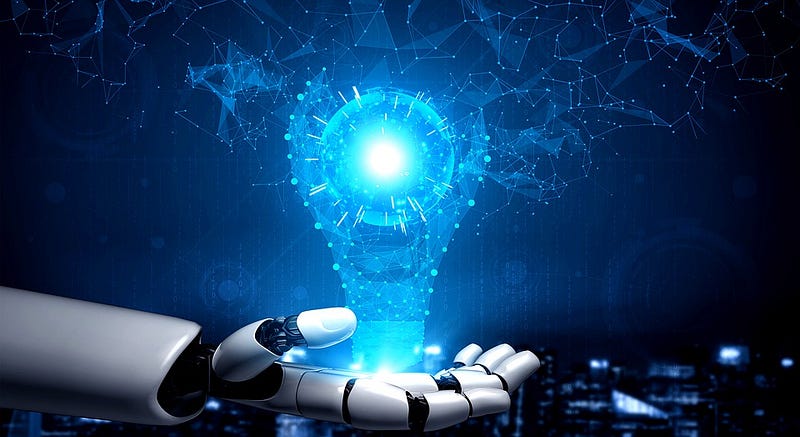Exploring AI's Potential for Creativity: A New Frontier
Written on
Chapter 1: The Legal Landscape of AI Inventions
Recently, I encountered a thought-provoking article authored by two experts, one specializing in law and the other in artificial intelligence. The authors argue that some existing AI technologies may infringe upon patent laws. While the intricate details elude me, the crux of the argument is that patent legislation traditionally assumes that inventors are human beings. However, this assumption is becoming increasingly outdated.
In 2019, two patent applications were submitted that identified the AI system DABUS as the inventor, although these patents were ultimately rejected. This raises the question of whether DABUS will be the last AI recognized in this manner. My previous writings have discussed the growing impact of AI in various fields, including science and art. A prominent example is DeepMind's AlphaFold, which has the capability to forecast protein structures based on amino acid sequences—an area that has long challenged researchers. Understanding these structures is crucial, as they play a significant role in determining protein functions. AlphaFold is already expanding our protein structure databases, paving the way for the development of new pharmaceuticals. Other AI technologies are making strides as well, such as the discovery of new antibiotics and advancements in material science.
But one might question: can we simply list the developers of these AI systems as the inventors? The challenge lies in the nature of these technologies, particularly deep neural networks. The term “deep” is significant here; data is inputted, and output is generated, but the inner workings remain opaque. I've previously referred to these complex systems as "black boxes."
I'll leave the complexities of intellectual property and patent law to the legal experts. My focus is directed elsewhere.
Section 1.1: Understanding Intuition and Invention
For a creation to qualify for a patent, it must meet several criteria: it should be tangible (software can fall into this category), it must be novel, it needs to have practical utility, and it should incorporate an inventive or non-obvious step in comparison to existing products or processes.
The last requirement essentially means that there must be some form of intuitive leap involved. Without delving too deeply into the nuances of what intuition entails, it appears to be a quality that current AI systems may not possess. Or do they? In 2016, when AlphaGo triumphed over human Go champion Lee Sedol, many observers were surprised by the AI's unforeseen strategies. Some labeled this as a form of creativity, while others were skeptical.
Is there an intuitive leap at play? It seems most of us would likely conclude that something is indeed missing. Intuition, insight, and creativity are difficult to define, but many definitions revolve around the concept of merging disparate ideas or concepts into something novel—an idea that resembles pattern recognition, which is fundamentally what AI currently excels at.
Subsection 1.1.1: The Role of Intentionality

Despite the challenges, there may still be hope for AI's creative capabilities. A common argument against the notion of AI-driven creativity is the absence of intentionality. When humans embark on a creative endeavor, there is an intention behind the actions taken to achieve the desired outcome. This focus may even manifest in seemingly aimless actions, like doodling, that can spur creativity.
However, the argument surrounding intentionality may not be sufficient. Research into intentional AI in contexts like card games and medical applications demonstrates that some intentions can be technically mediated. This suggests that the goals of AI systems are at least partially programmed. Nevertheless, this isn't enough on its own. Just as some human intentions may be shaped by evolutionary factors—such as seeking resources or companionship—AI's intentions are constrained by their programming.
This raises an interesting point: while AI can efficiently sift through vast amounts of digital content, humans have the ability to engage in a variety of experiences that inspire creativity—whether it be reading a book, enjoying a melody, taking a morning jog, embracing a loved one, or observing a sunset. The richness of our experiences, which AI currently cannot replicate, provides a broader range of inspiration.
Ultimately, creativity necessitates both freedom and constraints. While AI's programming limits its creative freedom, this also imposes constraints that can hinder its innovative potential. True creative AI would require the ability to wander mentally and dream.
Chapter 2: The Future of AI Creativity
The question remains: can AI truly be creative? This inquiry opens a dialogue about the nature of creativity itself and what it means to create.
In the video "Can AI be Creative?", the discussion revolves around the various dimensions of creativity in the context of artificial intelligence, exploring whether AI can transcend its programming limitations.
Another video titled "Will Artificial Intelligence End Human Creativity?" delves into the implications of AI on human creativity, posing critical questions about the future interplay between technology and artistic expression.
Thanks for engaging with this exploration! Feel free to connect with me on Twitter and subscribe to Thinking Ahead for more insightful discussions.